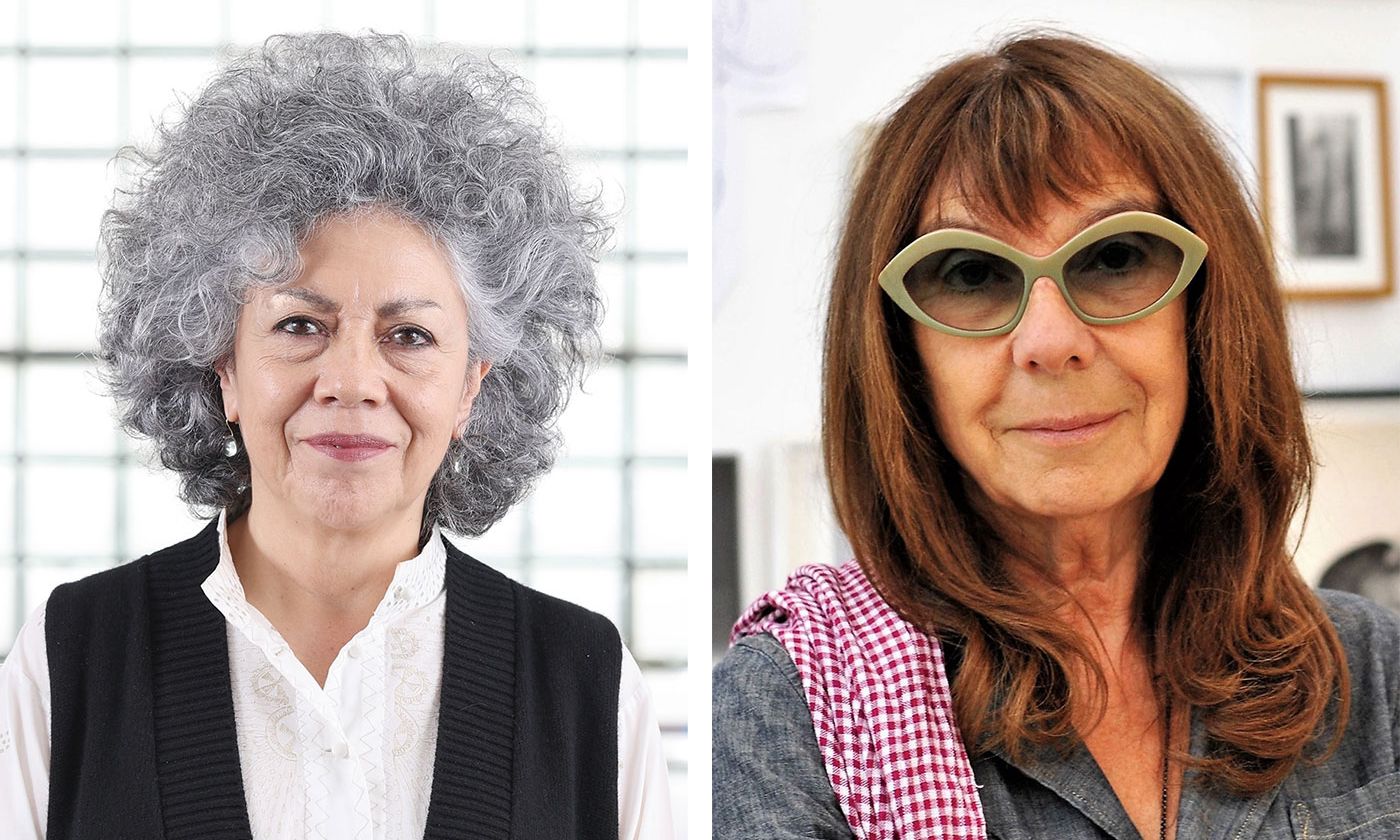Doris Salcedo (left) wins the Praemium Imperiale for sculpture, and Sophie Calle (right) is the laureate for painting Photographs: Salcedo, ©︎The Japan Art Association / The Sankei Shimbun; Calle: Yves Géant
The French-born artist Sophie Calle has been awarded the 2024 Praemium Imperiale Award for painting, and the Colombian-born Doris Salcedo the award for sculpture. Both receive a 15 million yen (£73,000) honorarium. They are among five international recipients of the award, presented by the Japan Art Association, under its honorary patron, Prince Hitachi, younger brother of the Emperor Emeritus of Japan.
The other winners are the Taiwanese film director Ang Lee, for theatre/film, the pianist Maria João Pires for music, and the Japanese architect Shigeru Ban, for architecture.
Chris Patten, the politician and former chancellor of the University of Oxford and the Praemium Imperiale’s international advisor in the UK, said, “All five Laureates of the 2024 Praemium Imperiale awards have taken their land and people as inspiration to create works of profound poetry and impact. From Shigeru Ban and Doris Salcedo’s response to conflict and natural disaster to Ang Lee’s meditation on family and love, the Japan Art Association turns the spotlight on five hugely diverse artists whose humanity shines in times of uncertainty and turbulence.”
Doris Salcedo is celebrated for her work relating to humanitarian issues and the violence suffered by victims of Colombia’s 52-year civil war, which came to an end in 2016. Her Fragmentos (2018), created to mark the end of the Colombian civil war, used melted weapons given up by members of the left-wing guerrillas Farc (Revolutionary Armed Forces of Colombia).
One of Salcedo’s most powerful recent works Palimpsest (2013-17), was shown at the Beyeler Foundation in 2022-23. This huge installation features the names written in sand on stone of refugees and asylum seekers—the vulnerable seeking safety—who have lost their lives at sea.
Salcedo’s work, she told The Art Newspaper in 2023, reflects the effects of an “interconnected” world. Her Uprooted (2023), shown at the 2023 Sharjah Biennial, uses dead trees to build an uncanny dwelling that alludes both to migration and the related climate emergency. “We are all in this together,” she said. “It’s a fairly small planet. And everything that is happening in one place is connected to another place.”
The conceptual artist Sophie Calle represented France at the Venice Biennale in 2007. Her exhibition The Ghosts of Orsay (2022) at the Musée D’Orsay in Paris carried a story within a story as Calle had inhabited part of the then-derelict former station and hotel in the late 1970s. There she had hosted friends in room 501 and collected documents, objects and records of former guests at the abandoned hotel including communication with a hotel employee called Oddo, whose identity she started to play with. “The Ghosts of Orsay is a total artwork mixing photography, poetry, readymades,” the curator Donatien Grau told The Art Newspaper in 2022 . “It reveals Calle’s unique ability to weave narratives.” That play with narrative and identity was at the heart of the novelist Paul Auster’s Leviathan (1992) in which Calle was the inspiration for the fictional character Maria.
Shigeru Ban, winner of the 2014 Pritzker Architecture Prize, and designer of landmark buildings including the Centre Pompidou-Metz, the Aspen Art Museum and the Mt Fuji World Heritage Centre, is know for setting up the NPO Voluntary Architects Network (VAN) in 1995. VAN and Shigeru Ban Architects have carried out disaster relief activities across the world, most recently by supplying Paper Partition System for shelters for Ukrainian refugees inside Ukraine, as well as in Poland, Slovakia, Germany and France. The practice is building a new surgical wing for the main hospital in Lviv, the largest in Ukraine, to handle the massive increase in patient numbers since the Russian invasion in 2022.
The Praemium Imperiale Awards have been given annually since 1989 to cover fields of achievement not represented by the Nobel Prizes. The laureates are selected from a list submitted by international advisers to the Japan Art Association.
In addition to the Praemium Imperiale Awards, the 5m Yen (around £25,000) Grant for Young Artists, selected this year by the Asian Nomination Committee, has been awarded to the Komunitas Salihara Arts Center, founded in 1995, Indonesia’s first private cultural complex dedicated to promoting the visual arts, music, dance, theatre, literature and film.
• For an in-depth interview with Doris Salcedo, listen to this episode of our A brush with…podcast

